
what you'll learn...
overview
This page introduces division of whole numbers as -- one number, dividend, is split into the number of parts given by the second number, divisor. The count or measure of one part is the result, quotient. And the remaining count of dividend, that could not be split, is the remainder of the division.
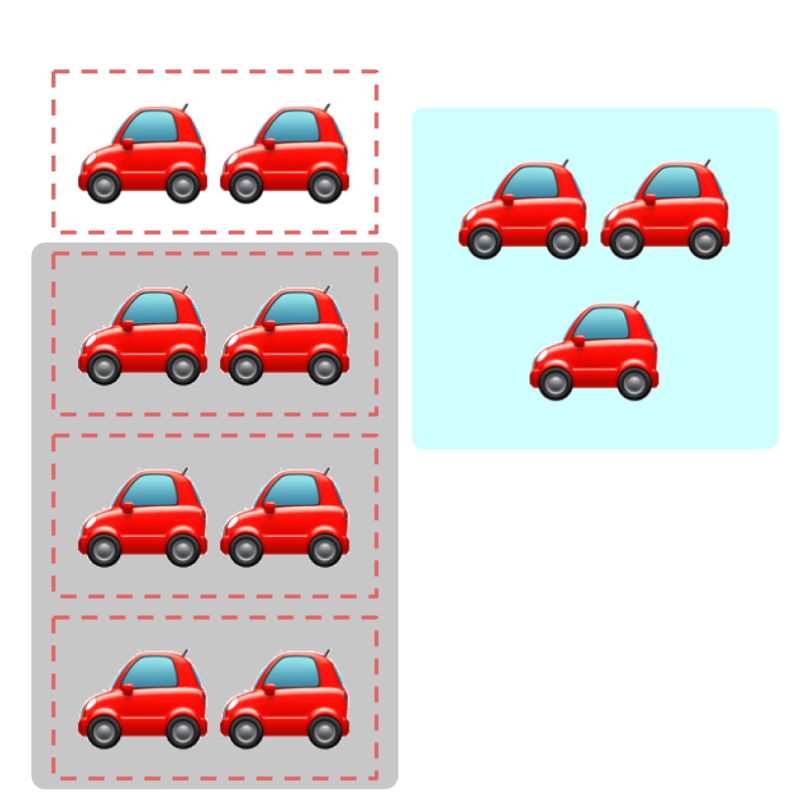 Count of 1111 is split into 44 parts. The resulting count of one part is quotient 22 and the part that is not split is the remainder 33.
Count of 1111 is split into 44 parts. The resulting count of one part is quotient 22 and the part that is not split is the remainder 33.
The same is abstracted for division in number-line.
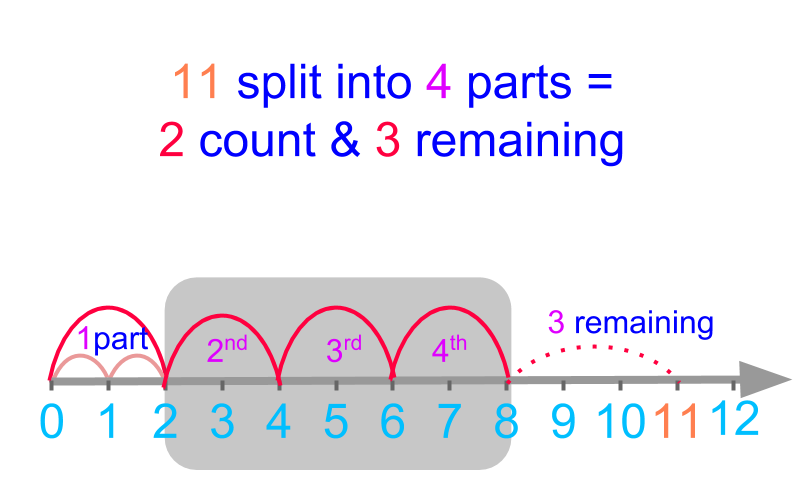 The definition of division in first principles form the basis to understanding simplified procedure for division of large numbers.
The definition of division in first principles form the basis to understanding simplified procedure for division of large numbers.
split
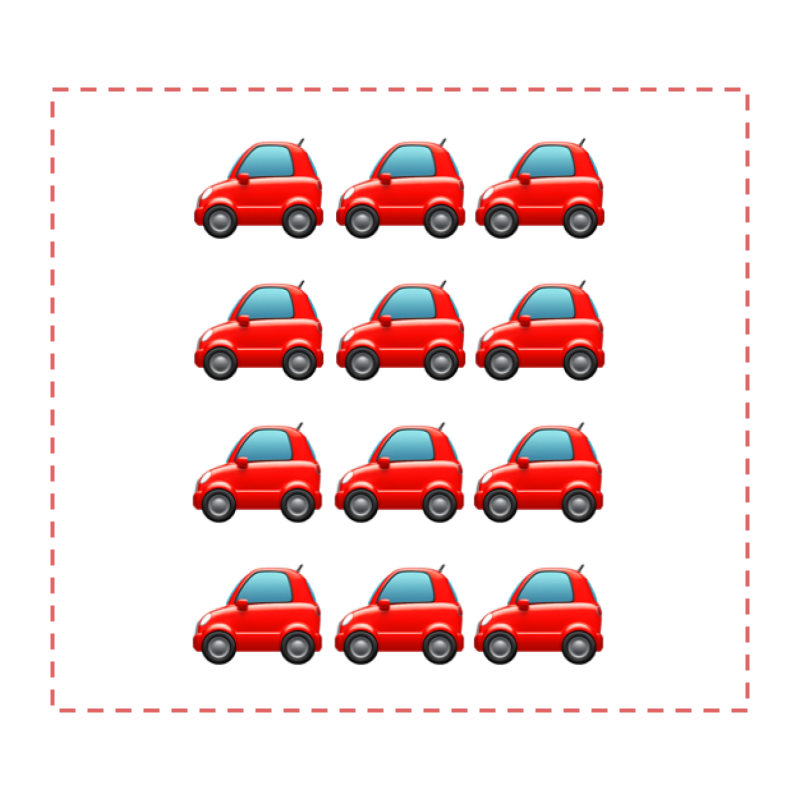
There are 1212 cars given to 44 showrooms. Each get equal number of cars.
Each showroom gets 33 cars.
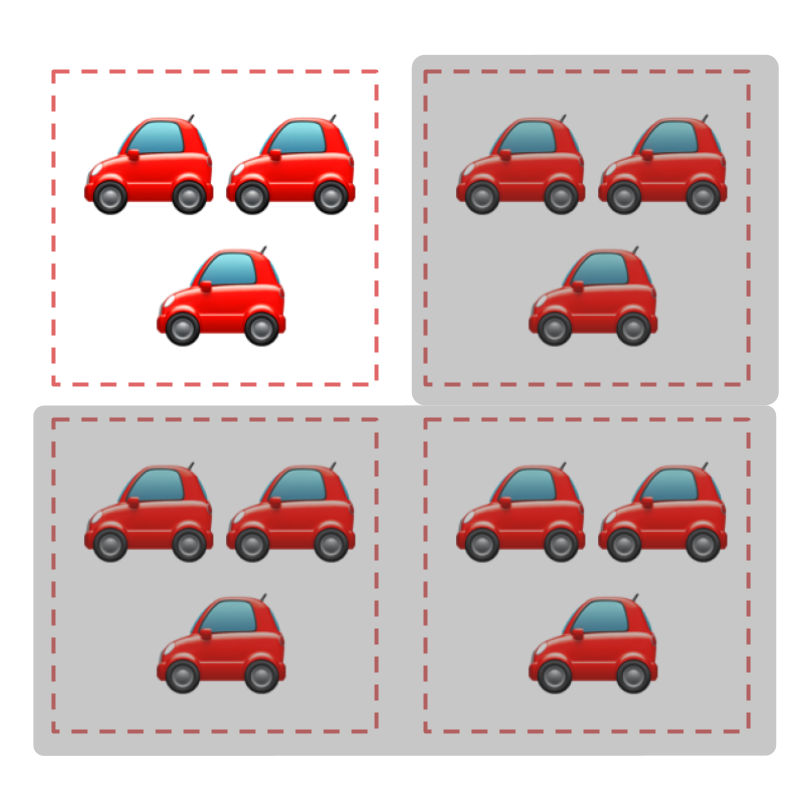
Considering the figure with 12 cars and 4 boxes representing each of the 4 show rooms.
12 is split into 4 equal parts and one part is selected. And the counting is done from 1 to 3. The resulting count is 3.
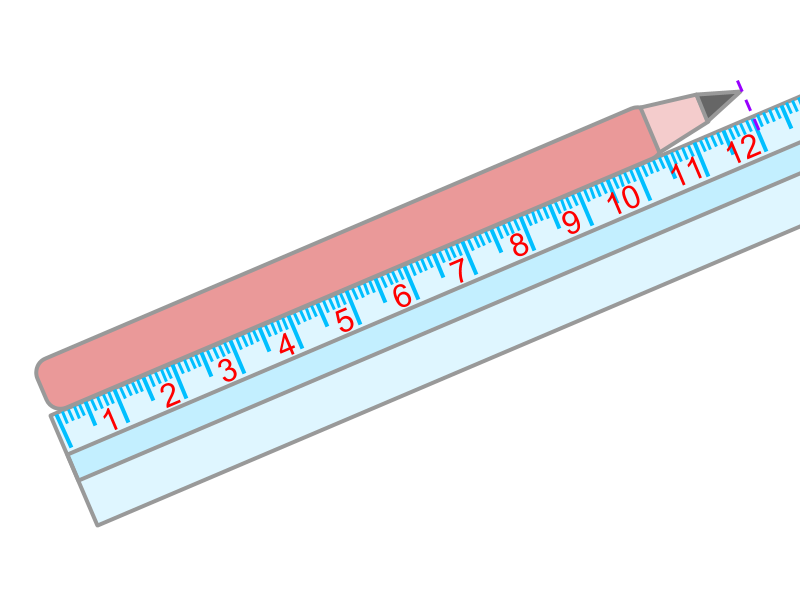
A pencil is 12 centimeters in length. If the pencil is cut into 4 equal pieces, each piece is of length 3 centimeters.
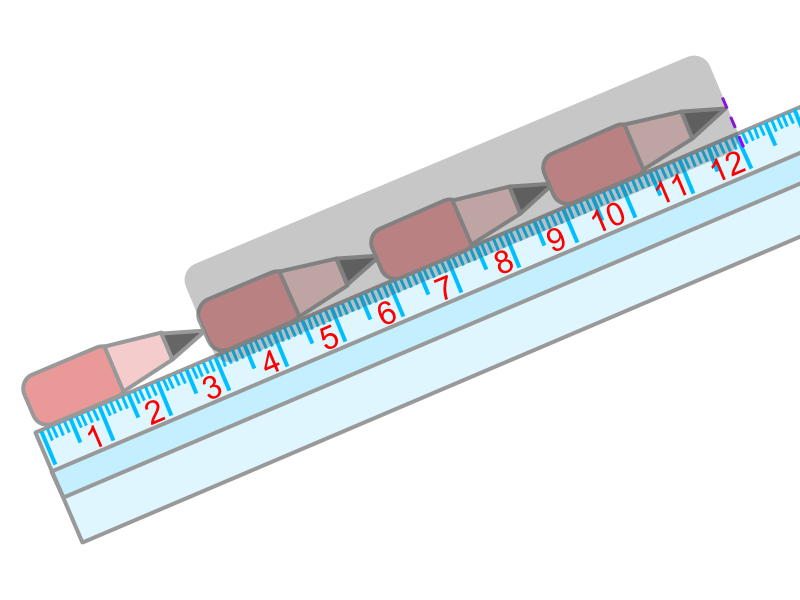
A pencil is 12 centimeters in length.
The pencil is split into 4 equal pieces and one piece is selected. The selected piece is measured to be 3 centimeter long.
The count or measure of quantities can be split into equal parts or divided.
The division results in the count or measure of one part of the quantity.
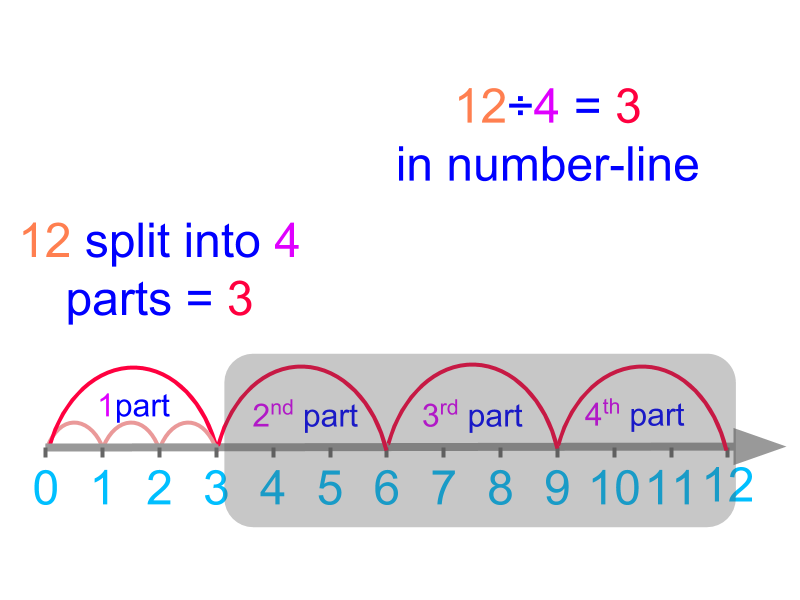
Division 12÷4 is given in number-line. The whole 12 is split into 4 equal parts. One part is chosen. The rest are grayed in the figure. The chosen part is counted in the number-line to be 3.
dividend, divisor, quotient, remainder
The word "division" means: action of separating or splitting something.
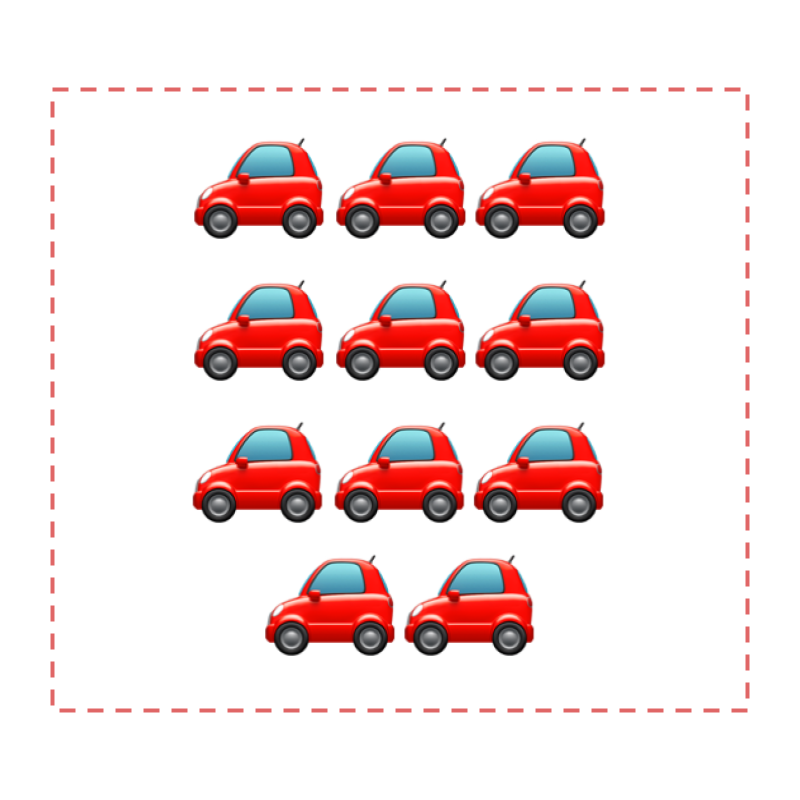
There are 11 cars given equally among 4 showrooms. Each showroom gets 2, and 3 cars cannot be distributed.

Considering the figure with 11 cars and 4 dotted-boxes representing each of the 4 show rooms.11 is split into 4 equal parts with each assigned 2 cars. There are 3 cars remaining. The remaining cars are not enough to assign equally to each dotted-box.
After distributing, one part is counted as 2 and remaining amount is 3.

Division 11÷4 is given in number-line. The whole 11 is split into 4 equal parts with 3 remaining.
One part is chosen. The rest are grayed in the figure. The chosen part is counted in the number-line to be 2.
Division - First Principles : Two numbers are considered, each of which represents a count or measurement. One of the amount is split into a number of parts given by the second. The amount of one part is the result.
eg: 11÷4=2 count and 3 remaining
11 is the dividend
4 is the divisor
2 is the quotient
3 is the remainder
11÷4=2 quotient &3 remainder
The word "dividend" means: a number that is being divided.
The word "divisor" means: a number that divides another number.
The word "quotient" means: the result of a division.
The word "remainder" means: the number left over in division.
summary
Division - First Principles : Two numbers are considered, each of which represents a count or measurement. One of the amount is split into a number of parts given by the second. The amount of one part is the result.
eg: 11÷4=2 count and 3 remaining
11 is the dividend
4 is the divisor
2 is the quotient
3 is the remainder
11÷4=2 quotient and 3 remainder
Outline
The outline of material to learn whole numbers is as follows
Note: click here for detailed outline of Whole numbers
• Introduction
→ Numbers
→ Large Numbers
→ Expanded form
→ Face and place values
→ Approximation and Estimation
• Comparison
→ Comparing two numbers
→ Number line
→ Predecessor & Successor
→ Largest & Smallest
→ Ascending & Descending
• Addition Subtraction
→ Addtion: First Principles
→ Addition: Simplified Procedure
→ Subtraction: First Principles
→ Subtraction: Simplified Procedure
• Multiplication Division
→ Multiplication: First Principles
→ Multiplication: Simplified Procedure
→ Division: First Principles
→ Division: Simplified Procedure
• Numerical Expression
→ Introducing Numerical Expressions
→ Precedence
→ Sequence
→ Brackets